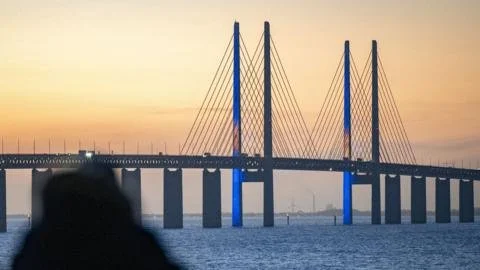Beyond Borders: How the Öresund Bridge Transformed Commuting and Commerce
The Öresund Bridge, a remarkable engineering marvel, has dramatically transformed cross-border commuting and economic growth since its opening 25 years ago. Connecting Denmark and Sweden, it stands as Europe’s longest road and rail bridge, facilitating a booming commuter culture and fostering business relocations. Oskar Damkjaer, a software engineer, and Laurine Deschamps, a gaming brand manager, exemplify the evolving lifestyle where convenient commutes have become the norm. The bridge, initially envisioned to enhance travel and economic integration, has undoubtedly exceeded its expectation with over 400% increase in cross-border commuting and a 73% rise in businesses requiring transnational operations.
A report from Öresundsinstitutet highlights that more than 100 companies have moved their Swedish headquarters to Malmö since the bridge’s opening, attracting thousands of skilled workers. In addition, a 25% increase in Danish-Swedish trade has been linked to the bridge, underscoring its role in regional economic dynamism.
However, challenges persist. Despite record train commuter numbers reaching nearly 41,000 per day, issues like overcrowding and the cost of commuting, approximately $17 for a train and $80 for a car journey, pose concerns. Cultural integration is also complex as differing work environments and mental barriers impede smoother transitions for Danish professionals seeking opportunities in Malmö. Hermann Haraldsson, CEO of Boozt, recently highlighted the difficulties in attracting young talent due to these barriers.
Looking to the future, the Öresund Bridge serves as a blueprint for other cross-border projects, including the Fehmarnbelt tunnel and potential new connections between Sweden and other neighboring countries. Johan Wessman, CEO of Öresundsinstitutet, emphasizes the strategic importance of such infrastructure against geopolitical tensions, signaling that while challenges exist, the bridge’s legacy continues to inspire economic collaboration and innovation in northern Europe.

